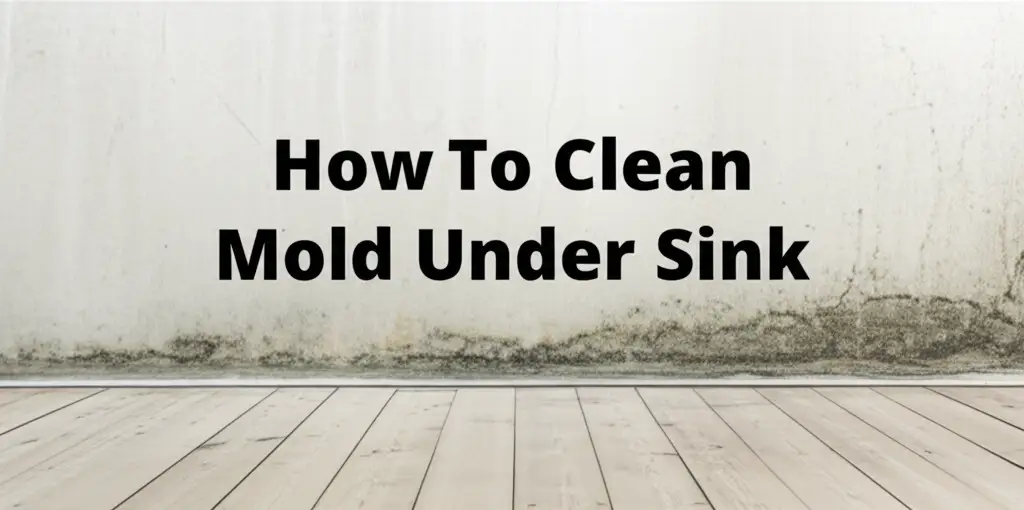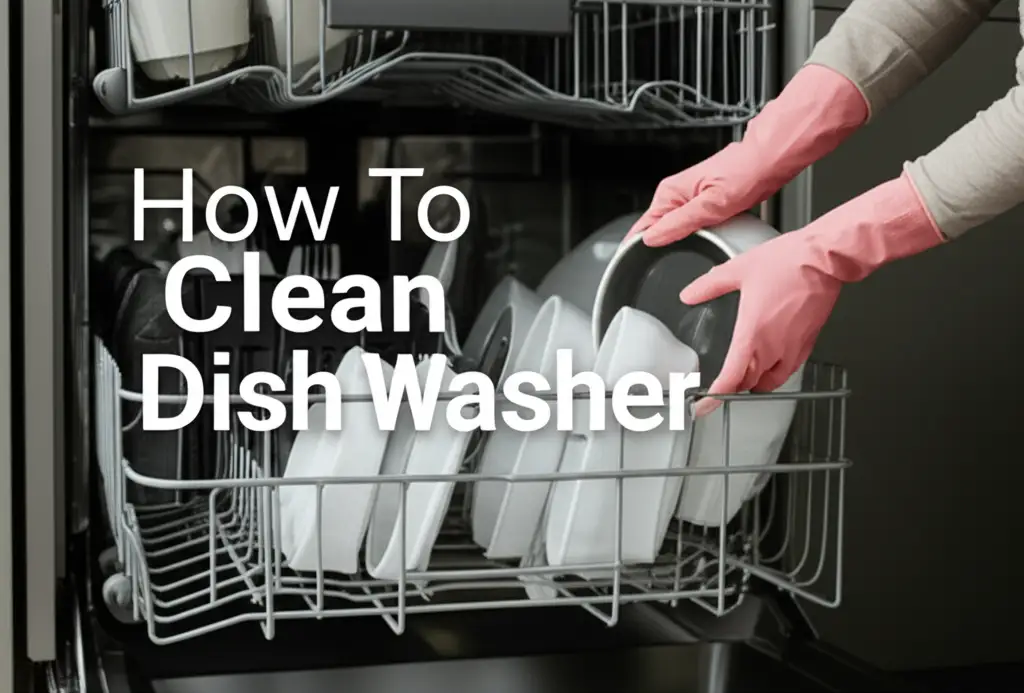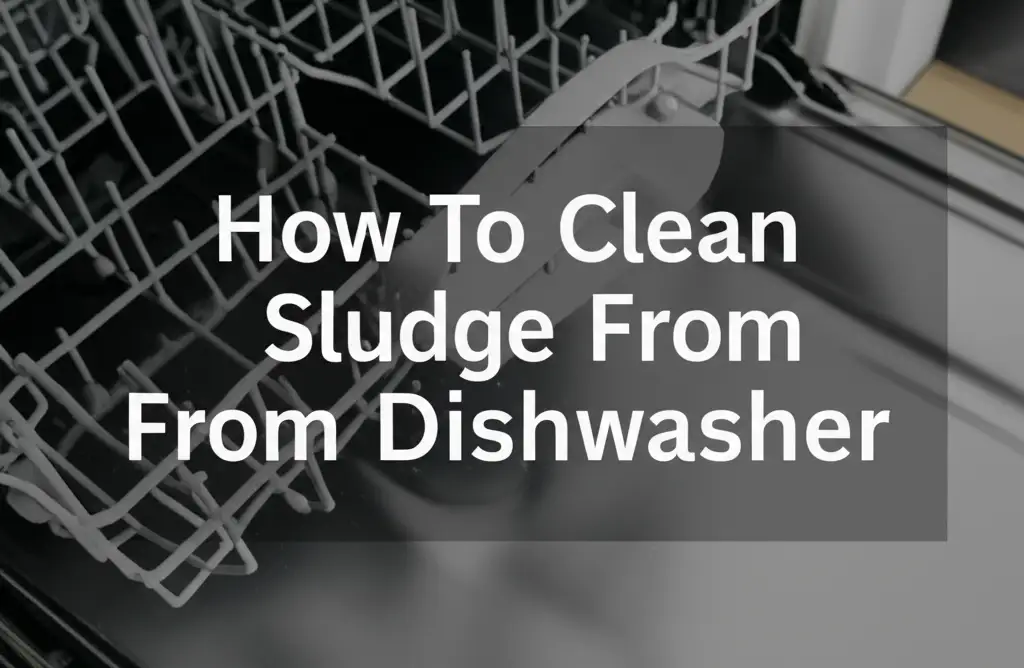· Home Cleaning · 20 min read
How To Clean Black Stuff In Dishwasher

How To Clean Black Stuff In Dishwasher
Discovering black stuff inside your dishwasher can be quite unsettling. It means your appliance is not just dirty, but it might be harboring mold, mildew, or hardened food debris. This unwelcome grime can affect how well your dishes get cleaned and even lead to unpleasant odors. Cleaning black stuff in dishwasher units is important for hygiene and appliance longevity.
I understand how frustrating it is to open your dishwasher and see this dark residue. It defeats the purpose of an appliance designed to clean! This article will guide you through the precise steps to identify the black stuff, clean it thoroughly, and implement preventative measures. We will cover common causes, the right tools, and effective cleaning agents like vinegar and baking soda to restore your dishwasher.
Takeaway
- Identify the type of black stuff (mold, mildew, food debris, hard water stains) to choose the right cleaning method.
- Disassemble and clean the filter, spray arms, and door gasket thoroughly.
- Use natural cleaners like white vinegar, baking soda, or citric acid for effective cleaning.
- Perform regular maintenance washes to prevent black stuff from reappearing.
Concise Answer to the Main Query
To effectively clean black stuff in your dishwasher, first identify its source, such as mold or food residue. Then, disassemble and scrub affected parts like the filter, spray arms, and door gasket using a brush and a solution of hot water and dish soap. Follow with a deep clean using white vinegar, baking soda, or citric acid to sanitize the appliance.
Understanding the Black Stuff in Your Dishwasher
When you spot black stuff in your dishwasher, it is natural to feel a bit concerned. This black residue is more than just dirt; it often indicates specific problems within your appliance. Identifying what exactly you are dealing with helps you choose the most effective cleaning approach. I have seen many dishwashers with this issue, and the causes are usually quite common.
The most frequent culprit behind black stuff is mold or mildew. These fungi thrive in damp, dark environments with a food source, making your dishwasher an ideal breeding ground. Food particles left after cycles provide the necessary nutrients for mold to grow. You might notice a musty smell along with the black spots if mold is present. It often appears on the door gasket, around the filter, or even inside the spray arms.
Another common source of black residue is accumulated food debris and grease. Over time, small food particles and grease can build up in various parts of the dishwasher, especially the filter and spray arm nozzles. This organic matter starts to decompose, turning dark and creating a sticky, tar-like substance. This kind of black stuff usually feels greasy or slimy to the touch. It is often found at the bottom of the tub or clogging the spray arm holes.
Sometimes, black spots can be mineral deposits from hard water, mixed with detergent residue. If your area has hard water, minerals like calcium and magnesium can combine with leftover detergent to form a dark, scaly film. This type of black stuff is typically harder and might feel gritty. It can appear anywhere water touches frequently, like the bottom of the tub or the heating element. It is important to address these buildups, as they can reduce your dishwasher’s cleaning efficiency. Understanding the nature of the black stuff is the first step in successful cleaning.
Essential Tools and Preparations for Cleaning
Before you begin the task of cleaning black stuff in your dishwasher, gathering the right tools is important. Having everything ready saves time and ensures a thorough job. I always make sure I have these items on hand whenever I tackle a dirty dishwasher. A clean dishwasher means cleaner dishes, so preparing well is worth the effort.
You will need a few basic cleaning tools. A pair of rubber gloves is essential to protect your hands from grime and cleaning solutions. I find that a soft-bristled brush, like an old toothbrush or a bottle brush, is perfect for reaching into tight spots and scrubbing away stubborn residue. A microfiber cloth or sponge is useful for wiping down surfaces. For larger debris, you might want some paper towels. Having a small bowl or bucket for mixing solutions can also be helpful.
When it comes to cleaning agents, you can often rely on common household products. White vinegar is a versatile cleaner, great for dissolving mineral deposits and killing mold. Baking soda is excellent for absorbing odors and providing a gentle abrasive scrub. For heavy mineral buildup, citric acid powder can be very effective. I often use a combination of these for the best results. You might also need some regular dish soap for preliminary scrubbing of greasy areas.
Before you start any deep cleaning, make sure your dishwasher is completely empty. Remove all dishes, cutlery, and racks from the appliance. This gives you full access to all interior surfaces and components. It is also a good idea to disconnect the power to the dishwasher at the circuit breaker for safety, especially if you plan to reach into areas near electrical components or the heating element. Taking these simple preparatory steps makes the cleaning process much safer and more efficient.
Step-by-Step Cleaning: Targeting Specific Areas
Cleaning black stuff in your dishwasher requires a focused approach on specific areas where grime tends to accumulate. I break down the process into manageable steps, tackling one part of the dishwasher at a time. This method ensures that no spot is missed and the black residue is removed completely. A systematic clean will restore your dishwasher’s performance.
The Dishwasher Filter: A Common Accumulation Point
The dishwasher filter is often the first place black stuff builds up. It traps food particles, preventing them from recirculating and redepositing on your dishes. However, if not cleaned regularly, these trapped particles can decompose and turn into black gunk. I advise checking your filter weekly.
- Locate and remove the filter: Most dishwashers have a cylindrical filter at the bottom, under the lower spray arm. Twist and lift it out. Some models may have a flat filter assembly that also needs to be lifted. Consult your appliance manual if you have trouble finding it.
- Rinse thoroughly: Take the filter to your sink and rinse it under hot running water. Use a brush or an old toothbrush to scrub away all visible food debris and black residue.
- Soak if necessary: If the black stuff is stubborn or slimy, soak the filter in a bowl of hot, soapy water for 15-30 minutes. You can add a splash of white vinegar to the water to help break down grease and mildew.
- Scrub and replace: After soaking, scrub the filter again until it is completely clean. Make sure no black particles remain. Rinse it well and then reinsert it correctly into your dishwasher.
Spray Arms: Clearing Clogged Nozzles
The spray arms, located at the top, middle, and bottom of your dishwasher, propel water to clean dishes. If these arms have black stuff, it often means the tiny holes (nozzles) are clogged. This can lead to poor cleaning performance. I make sure to check these regularly, as clogged nozzles mean dirty dishes.
- Remove the spray arms: Most spray arms simply unscrew or unclip from their central attachment point. It is usually a simple twist or pull motion.
- Inspect the nozzles: Hold the spray arm up to the light and look for black gunk or debris clogging the small holes. These clogs restrict water flow.
- Clear the clogs: Use a toothpick, a small wire, or a straightened paperclip to poke through each clogged nozzle. Work carefully to push any black stuff out.
- Rinse and scrub: Rinse the spray arms thoroughly under hot water. If there is black residue on the surface, scrub it with a brush and dish soap. For persistent black stuff, you might need to soak the entire arm in a vinegar solution for 15 minutes before scrubbing.
- Reattach: Once clean and clear, reattach the spray arms firmly. Make sure they can rotate freely.
Door Gasket and Crevices: Where Mold Hides
The door gasket is the rubber seal around the dishwasher door that prevents water from leaking out. This area is often damp and can collect food particles, making it a prime spot for black mold or mildew to grow. This is one of the most common places I find black stuff hiding.
- Wipe down: Open the dishwasher door fully. Use a damp cloth or sponge with a bit of dish soap to wipe down the entire gasket. Pay close attention to the folds and crevices where mold can hide.
- Scrub stubborn areas: For stubborn black mold or mildew, mix equal parts white vinegar and water in a spray bottle. Spray the solution directly onto the black areas and let it sit for a few minutes. Then, use an old toothbrush or a small brush to scrub the black stuff away. Cleaning black stuff in sink drain involves similar techniques for gunk in tight spots.
- Dry completely: After scrubbing, wipe the gasket dry with a clean cloth. Ensuring the area is dry helps prevent mold from returning.
Interior Walls and Bottom: General Buildup
The interior walls, bottom, and even the detergent dispenser can accumulate general black residue from food particles, grease, or hard water. This general buildup can lead to odors and affect the overall cleanliness of your appliance. I like to give these surfaces a good wipe down after tackling the key components.
- Wipe surfaces: Use a sponge or microfiber cloth dampened with hot, soapy water to wipe down all interior surfaces. Pay attention to the corners and seams where gunk might settle.
- Address the detergent dispenser: Check the detergent dispenser for any black residue or old, caked-on detergent. Scrub it with a small brush and rinse well.
- Clean the heating element: If your dishwasher has an exposed heating element at the bottom, inspect it for black spots or buildup. You can gently scrub this with a non-abrasive pad and a vinegar solution.
- Rinse: After scrubbing, wipe down all surfaces with a clean, damp cloth to remove any soap residue.
By systematically cleaning these key areas, you can effectively remove the black stuff and significantly improve your dishwasher’s hygiene and performance.
Deep Cleaning Solutions: Vinegar, Baking Soda, and Citric Acid
After addressing the visible black stuff through manual scrubbing, a deep cleaning cycle using natural cleaning agents is essential. These solutions not only help remove any remaining residue but also sanitize the dishwasher and eliminate odors. I often recommend a combination of these for a truly refreshed appliance.
The Power of White Vinegar
White vinegar is an excellent natural cleaner due to its acetic acid content. It dissolves hard water mineral deposits, cuts through grease, and helps kill mold and mildew. It is safe for most dishwasher components. I find it especially effective for general sanitization.
- First, ensure your dishwasher is empty. Remove all dishes and silverware.
- Place a bowl of vinegar: Pour two cups of white vinegar into a dishwasher-safe bowl. Place this bowl on the top rack of your empty dishwasher.
- Run a hot cycle: Close the dishwasher and run a hot water cycle (or an intense wash cycle). Do not use any detergent during this cycle. The vinegar will be dispersed throughout the appliance, cleaning and deodorizing as it goes.
- For persistent black mold: You can also spray pure white vinegar directly onto affected areas like the door gasket or interior corners, let it sit for 15-30 minutes, then scrub before running a full cycle. How to clean dishwasher with vinegar and baking soda offers more details on combining these methods.
Baking Soda for Odor and Light Stains
Baking soda is a mild abrasive and a powerful odor absorber. It is great for tackling lingering smells and can help lift light black stains. I use it to follow up a vinegar wash or as a regular maintenance booster. It leaves the dishwasher smelling fresh.
- Sprinkle baking soda: Once the vinegar cycle is complete, and the dishwasher has cooled down, sprinkle one cup of baking soda across the bottom of the dishwasher tub.
- Run a short hot cycle: Close the dishwasher and run a short, hot rinse cycle or a quick wash cycle. Again, do not add any other detergent. The baking soda will help scrub away residual grime and neutralize any remaining odors.
- For scrubbing: You can also mix baking soda with a little water to form a paste. Use this paste to scrub stubborn black spots on the interior surfaces with a soft brush or cloth.
Citric Acid for Heavy Mineral Buildup
If the black stuff is primarily due to hard water mineral deposits mixed with grime, citric acid is your best friend. It is more potent than vinegar for dissolving tough mineral scale. I use this when water spots are prevalent. How to clean dishwasher with citric acid provides a detailed guide on its usage.
- Add citric acid: Pour 3-4 tablespoons of powdered citric acid into the main detergent dispenser.
- Run a hot cycle: Close the dishwasher and run a hot wash cycle, preferably an intense or heavy-duty cycle. Do not add any other detergent.
- Rinse if needed: After the cycle, inspect the dishwasher. You might want to run a quick rinse cycle with plain water to ensure all citric acid residue is gone.
Using these deep cleaning solutions regularly, perhaps once a month or every few weeks, helps keep black stuff from forming in your dishwasher. They are natural, effective, and safe ways to maintain a sparkling clean appliance.
Addressing Stubborn Black Mold and Residue
Sometimes, the black stuff in your dishwasher is more than just dirt; it can be persistent mold or tough, caked-on residue. These require a bit more effort and specialized attention. I have encountered many such cases, and with the right approach, even the most stubborn black grime can be removed. It is about being patient and thorough.
If you suspect the black stuff is indeed mold, it is important to address it completely. Mold spores can spread and cause health issues if left untreated. Black mold often looks slimy or fuzzy and grows in damp areas. While the methods described earlier (vinegar, scrubbing) are effective, severe cases might need repeated applications or targeted treatment. How to clean black mold off wood provides general mold removal principles that can apply, though the surface is different.
For deeply embedded black residue, especially in crevices or corners, manual scrubbing is key. After running a vinegar or citric acid cycle, you might still see some stubborn spots. I suggest making a thick paste of baking soda and a small amount of water. Apply this paste directly onto the black areas. Let it sit for 15-20 minutes. The baking soda acts as a gentle abrasive and can help lift the grime.
Use a stiff-bristled brush, an old toothbrush, or even a small detailing brush to scrub these areas. Pay extra attention to the lip of the door, around the filter housing, and any other nooks and crannies. You might need to apply a little elbow grease. For very tough, almost burnt-on looking black stuff, it could be a combination of food, grease, and minerals. Sometimes, warm soapy water with a good scrub is all it takes after a deep cleaning cycle softens the buildup.
In some extreme cases, particularly with older appliances, the black stuff could be deteriorating rubber components, such as parts of the gasket or wheels on the racks. If scrubbing does not remove it, and the material seems to be flaking or crumbling, you might need to consider replacing that specific part. While this is less common for just “black stuff,” it is a possibility for persistent, unremovable dark residue. Always consult your dishwasher’s manual or a service technician if you suspect component damage.
Maintaining a Clean Dishwasher: Prevention is Key
Once you have successfully cleaned all the black stuff from your dishwasher, the goal is to keep it from coming back. Regular maintenance is far easier than dealing with a major cleaning crisis. I always tell people that a little prevention goes a long way in keeping their dishwasher spotless and efficient. Consistent care makes all the difference.
First, always scrape excess food off your plates before loading them into the dishwasher. While dishwashers are designed to handle some food particles, large pieces can clog the filter and create breeding grounds for mold and mildew. This is a simple habit that makes a huge impact. I do not pre-rinse, but I certainly scrape everything into the trash.
Regularly clean your dishwasher filter. I recommend doing this at least once a week, or more often if you use your dishwasher frequently or wash heavily soiled dishes. A clean filter ensures proper drainage and prevents food debris from accumulating and turning black. It only takes a few minutes to remove, rinse, and replace the filter, but it saves hours of future cleaning.
Run an empty hot cycle with a cleaning agent monthly. This helps to break down any grease, soap scum, or hard water deposits before they become problematic. You can use two cups of white vinegar in a bowl on the top rack, or a dishwasher cleaning tablet. This routine maintenance wash is critical for preventing the return of black stuff and keeping the interior fresh.
- Monthly Vinegar Wash: Place a bowl with 2 cups of white vinegar on the top rack. Run an empty hot cycle.
- Monthly Baking Soda Sprinkle: After a vinegar wash, sprinkle 1 cup of baking soda on the bottom and run a short, hot rinse cycle.
Pay attention to the dishwasher door gasket. Wipe it down with a damp cloth after each use or every few days. This prevents food particles and moisture from sitting on the seal, which is a prime spot for mold growth. Ensure the gasket is dry after cleaning to inhibit mildew.
Consider using a dishwasher cleaner specifically designed for appliance maintenance every few months. These products are formulated to tackle stubborn buildup that regular cycles might miss. They can help remove hidden black gunk you cannot easily reach. By adopting these simple habits, you can keep your dishwasher clean, efficient, and free from unsightly black stuff.
Troubleshooting Persistent Black Stuff and Odors
Even after a thorough cleaning, you might still encounter stubborn black stuff or lingering odors in your dishwasher. This can be frustrating, but these issues often point to specific underlying problems that require additional attention. I have a few tips for when the usual cleaning methods are not enough. It is about looking deeper into the appliance’s function.
If black stuff keeps reappearing quickly, especially mold-like residue, it might indicate an issue with moisture not fully drying out. Ensure your dishwasher is properly draining. A partially clogged drain hose or a faulty drain pump can leave standing water, creating a perfect environment for mold to thrive. You might need to inspect the drain hose for kinks or blockages. For issues with other “black gunk” in plumbing, like in faucets, how to clean black gunk from faucet might offer conceptual similarities.
Another cause of recurring black stuff, especially if it is greasy or slimy, could be improper detergent use. Using too little detergent might not clean dishes effectively, leaving food residue. Using too much detergent, or a non-HE detergent in an HE machine, can lead to excessive suds that do not rinse properly, leaving a film that traps dirt. Experiment with your detergent type and amount. Make sure you are using a good quality detergent that works well with your water type.
Lingering odors, even after cleaning, often mean hidden mold or anaerobic bacteria. These can thrive in inaccessible areas. One less common place for black residue or odor is behind the lower access panel or around the pump assembly. If you are comfortable and capable, you can sometimes remove the lower access panel to visually inspect for leaks or significant buildup. However, this is usually a job for a professional if you are unsure.
- Check Dishwasher Leveling: An unlevel dishwasher might not drain completely, leaving puddles. Adjusting the feet can resolve this.
- Inspect Water Temperature: Your dishwasher needs hot water to activate detergent and effectively clean. If your hot water heater is set too low, or if the dishwasher is not receiving hot enough water, cleaning can be compromised. Ensure your water heater is set to at least 120°F (49°C).
- Air Circulation: After a cycle, leaving the dishwasher door ajar for a while can help air circulate and dry the interior, preventing moisture buildup that promotes mold growth. I do this consistently.
If persistent black stuff and odors remain after trying all cleaning and troubleshooting tips, it might be time to call a professional appliance technician. They can diagnose internal issues, such as a failing pump, a clogged drain line beyond what you can reach, or a deteriorating internal component. Sometimes, the problem is more mechanical than just a cleaning issue.
When to Call a Professional
While most black stuff in your dishwasher can be cleaned with DIY methods, there are situations when calling a professional appliance technician is the best course of action. I know it is tempting to fix everything yourself, but some issues require expert knowledge and specialized tools. Knowing when to call for help saves you time, frustration, and potential damage to your appliance.
You should consider calling a professional if the black stuff reappears very quickly after a thorough cleaning, despite your best preventive efforts. This could indicate a deeper underlying problem, such as a persistent clog in the drain line that you cannot reach, or a malfunctioning component that is not allowing the dishwasher to drain or dry properly. A technician has specialized equipment to diagnose these hidden issues.
Another reason to call a pro is if you notice water leakage or unusual noises coming from your dishwasher. Black residue could be a symptom of a larger mechanical problem, like a failing pump or a cracked hose, which are beyond standard cleaning procedures. If the black stuff is accompanied by standing water at the bottom of the tub after a cycle, it usually signals a drainage problem that needs professional attention.
If the black residue appears to be part of the dishwasher’s internal components deteriorating, rather than just grime, a technician can assess it. For example, if rubber parts are crumbling and turning into black flakes, they might need replacement. Attempting to replace complex internal parts without proper training can lead to further damage or safety hazards.
Lastly, if you are uncomfortable disassembling parts of your dishwasher, like the drain pump or complex filter assemblies, or if you simply lack the time, a professional can handle the deep cleaning and inspection efficiently. They can perform a comprehensive cleaning service that addresses all areas, ensuring your dishwasher is truly pristine and functioning correctly. Investing in professional service can extend the life of your appliance and ensure it is hygienic for your dishes.
Conclusion
Finding black stuff in your dishwasher is definitely an unwelcome sight, but it is a common issue with clear solutions. We have explored how to clean black stuff in dishwasher units effectively, from identifying the source to implementing powerful cleaning strategies using natural agents like vinegar, baking soda, and citric acid. I hope you now feel confident tackling this grime head-on. Regular maintenance is your best defense against its return, ensuring your dishes always come out sparkling clean and your appliance remains hygienic.
Remember, a clean dishwasher does not just look better; it performs better. By consistently cleaning the filter, spray arms, and door gasket, and running monthly deep cleaning cycles, you can prevent most black residue from ever forming. Do not let hidden grime compromise your kitchen hygiene. Take action today to restore your dishwasher’s shine and efficiency. If issues persist, do not hesitate to consult a professional. Your efforts will lead to a healthier home environment and a more reliable appliance.
- dishwasher cleaning
- black mold
- appliance care
- kitchen cleaning
- dishwasher maintenance
- mold removal
- gunk removal




